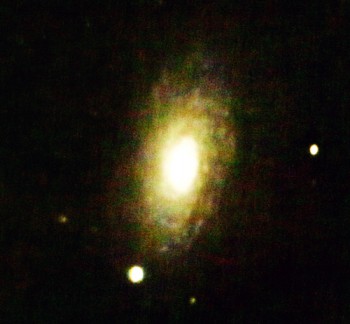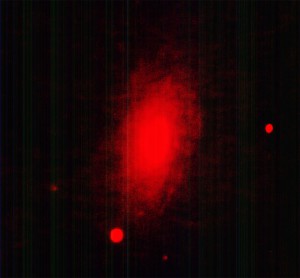Reprinted from the Island Free Press
Mars will be at opposition on May 22. Opposition occurs when the sun and Mars are on opposite sides of the Earth. That means Mars will be the brightest it’s been in 11 years, with a magnitude of -2.1. This is the great opportunity to observe the “red planet.”
Supporter Spotlight
Jupiter will be well above the horizon at dusk in the beginning of May. It will set just before 4 a.m. Mars will rise around 9:46 p.m., followed by Antares at 10:06 and Saturn at 10:13 p.m. This small triangle is easy to spot, making it easy to find the two planets.

Mercury sets at 8:40 p.m. beginning on May 1. It is very close to the sun, so don’t look for it before the sun has set. Even at dusk, the sun can be bright enough to cause eye damage. Mercury will set about seven minutes earlier each night during the month. Each night it will get closer to the setting sun.
On May 9, Mercury will transit across the face of the sun. Do not try to watch this event with the unaided eye or sunglasses — you will damage your eyes. If you want to view this event, you will need a telescope equipped with a very good solar filter. The next transit of Mercury will be in 2019.
Pluto rose about 12:40 a.m. on May 1.
Neptune and Uranus will not offer good viewing in May.
Supporter Spotlight
The Eta Aquarids meteor shower will peak at about 4 a.m. on May 6. The Eta Aquarids usually offer about 60 shooting stars an hour. This meteor shower will appear to originate in the eastern sky.
Vega, the fifth brightest star in the sky, rises just after sunset in the northeast. Vega is the brightest star in the constellation Lyra. Vega was the first star — not counting the sun — to be photographed, which happened in 1850. You could consider that the first step in deep space astrophotography.
April Highlights

I want to express my gratitude to the Cape Hatteras Electric Cooperative for improving the night skies of Hatteras Island. Replacing the old high-pressure sodium vapor streetlight fixtures with the new directional LED fixtures have made our night skies much darker. I hope our local businesses and homeowners will follow suit and reduce their use of outside lighting.
My wife and I were in Hawaii during most of April. When we were on the big island, we took the tour of Mauna Kea, a 13,800-foot, dormant volcano. Most of the time, the mountaintop is blessed with clear, dry skies because it is above the top of the clouds. Mauna Kea is home to several of the most advanced observatories in the world, including the 8.2-meter Subaru Telescope and the twin 10-meter telescopes at the Keck Observatory.
This was probably the only time in my life that I have had the pleasure to experience a Class 1 sky, as measured on the Bortle light pollution scale. Amateur astronomer John E. Bortle created the scale for the February 2001 edition of Sky & Telescope magazine to help other amateurs evaluate and compare the darkness of observing sites. Class 1 is the darkest sky available on Earth, whereas Class 9 represents a brilliantly lit inner-city sky.
Even though we were only allowed to view the big “working” observatories from the outside, I did get a chance to discuss several items of interest with local astronomers that will hopefully improve my observations and photography in future articles.
Moon Phases
- New moon: May 6
- First quarter: May 13
- Full moon: May 21
- Last quarter: May 29
Astronomy Talk
A planet is said to be in “opposition” when it is on the opposite site of the earth from the sun.
A planet is said to “transit” the sun when it crosses between the earth and the sun. Obviously, only Mercury and Venus can transit the sun.
Learn More
This story is provided courtesy of the Island Free Press, a digital newspaper covering Hatteras and Ocracoke islands. Coastal Review Online is partnering with the Free Press to provide readers with more environmental and lifestyle stories of interest along our coast. You can read other stories about Hatteras and Ocracoke here.








